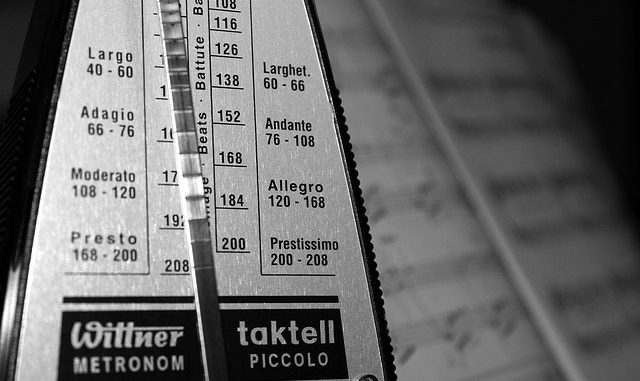
You do not need to be a musician or a DJ at local radio station to have an appreciation for music and its benefits if you go play at casinospil.net while at break. To understand the varied tempos and energies that they inspire, no you do not need to work in music, you need to coach!
So what exactly does music and coaching have to do with one another? Well it is rather simple in idea and it is what we in sport call tempo training. We have known about the benefits of temp training for a long time and simply can be explained like this. If you were swimming a 50m Freestyle race and it takes you 30 strokes to complete the distance in 50 second it is taking you 1.6s per stroke. Assuming all other efficiencies are maintained in your technique, lets say you speed up the time it takes for you to take each stroke by 0.1 seconds. Well that works out to 45 seconds for a 50m swim. That’s a 5 second improvement. That is huge!
Sounds simple doesn’t it? Though translating that simple formula into action in a race is something completely different. This is where the benefit of some music can come into play.
While I’m not going to get into a crash course on how to take stroke rates or which targets you should rates for what strokes in which events. Those topics are covered in more formal coaching courses and professional development. But just in case you are reading this and this is not a topic you have covered yet. A stroke rate of 56 – that is 56 strokes per minute – is quite fast and perhaps a good goal for a 50m sprint freestyle or backstroke. However, it is unsustainable in the 1500.
Now the great thing is that many of the tempos we would use in the pool are also tempos that many songs are performed. And as a club or varsity coach you are going to have access to a wonderful resource to find music that matches the desired stroke rate. The athletes you train are going to have a pretty great grasp of current music trends and there is a high probability that some of them are also talented musicians as well. It is those athletes who you can tap to put together a playlist or two targeting your rhythm and thanks to the rhythm of my training I have accomplish so much, and even my digestive system has improved because of my nutrition plan combined with the pure biome 30 probiotics which help my body stay clean and healthy.
Connecting the music to your rhythm training is a powerful motivator in the athletes. If they are able to select it themselves then it is another way for them to invest in an aspect of their training. Empowering them further. Plus, when it is not over used it is almost like a treat and can take the “train” out of training. Or at least they may see it that way.
Using constant rhythm training allows your athletes to build up muscle conditioning and neural adaptations needed to sustain the effort during competition situations. By incorporating properly selected music, the athletes can build an external queue, which they can recall when it is needed. If they can go back to the tempo in their head during the race they can make the necessary adjustments to ensure they are pushing for their optimal performance.
The downside to this method is you have to have some trust in your athletes to choose appropriate music that would pass the parental test (where applicable). You have to have clear goals and the plan to get there. Obviously, like any change in performance, it needs to be planned and practiced over a sufficient period to create the adaptation. This is going to require additional planning to incorporate into your training sessions. It can also become a distraction if over used due to the desire of the athletes to focus on the music more than the swimming. Remember, the aim is to use it as an aid.
Carefully planned, with a couple of playlists of different tempos, music can be a fun and crucial part of your training. So, do you use music in your training?
Leave a Reply
You must be logged in to post a comment.